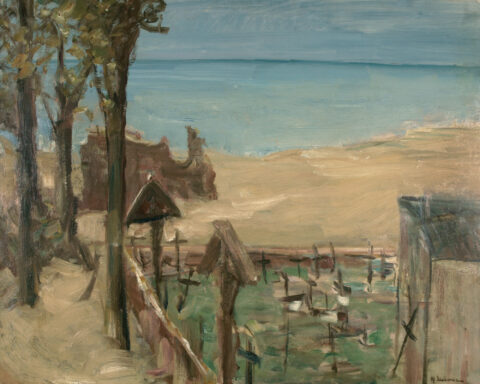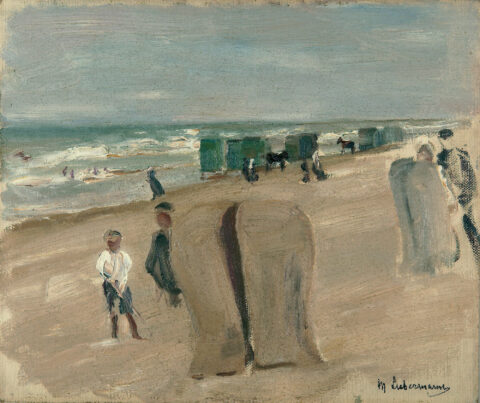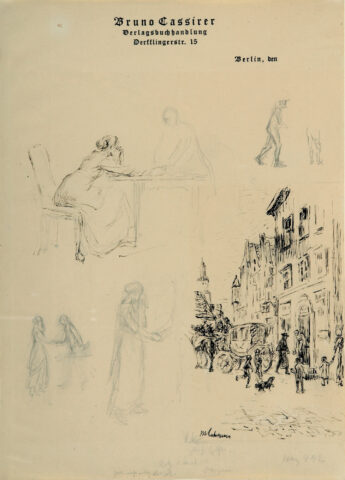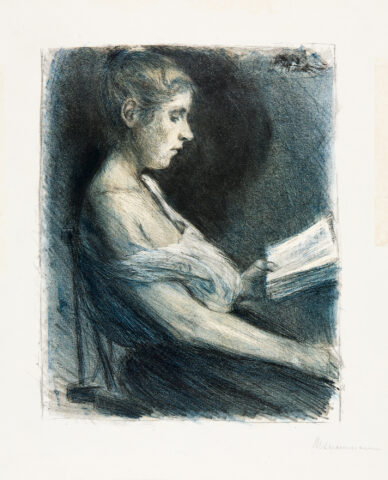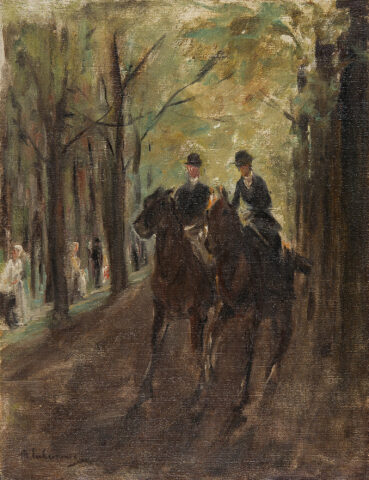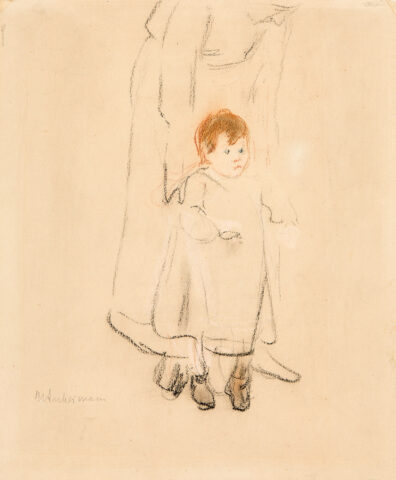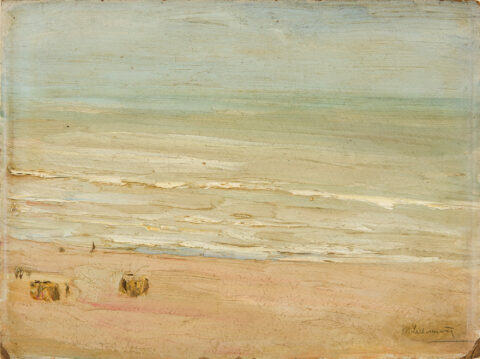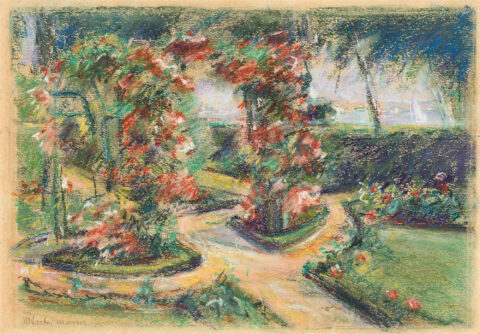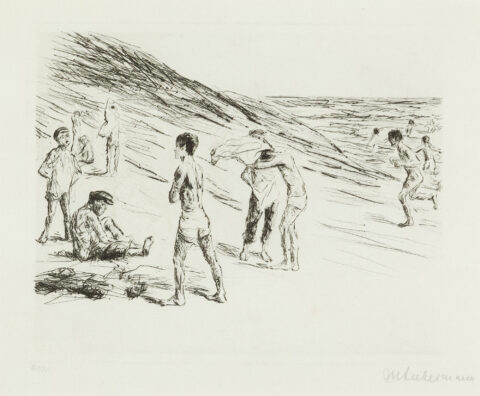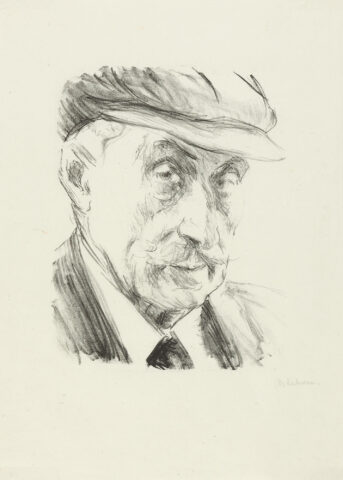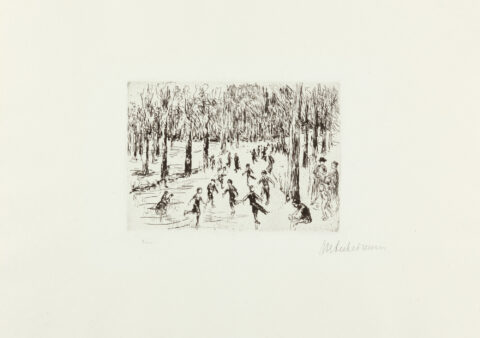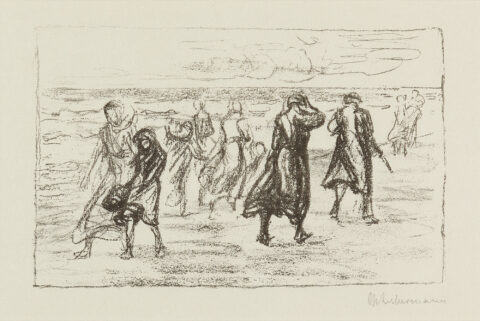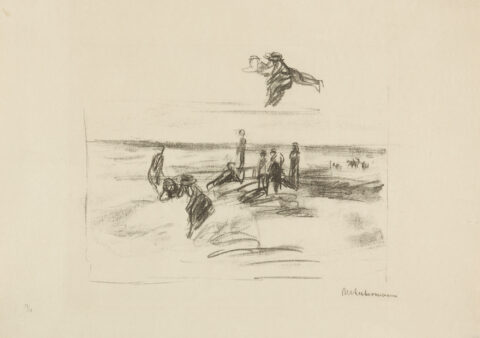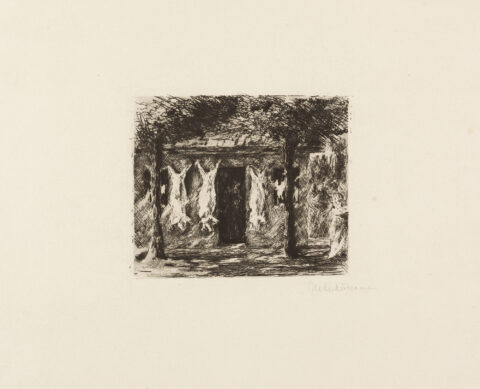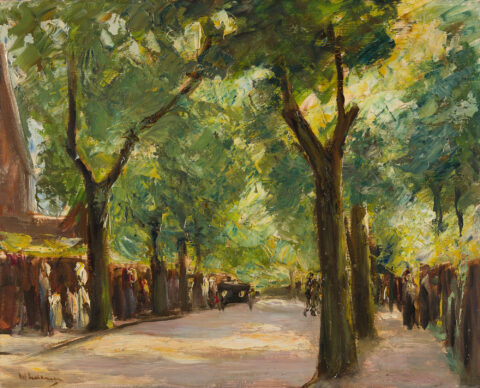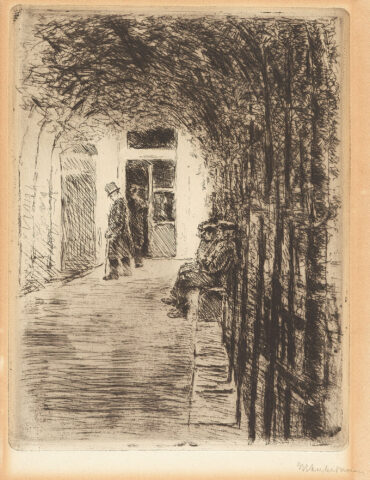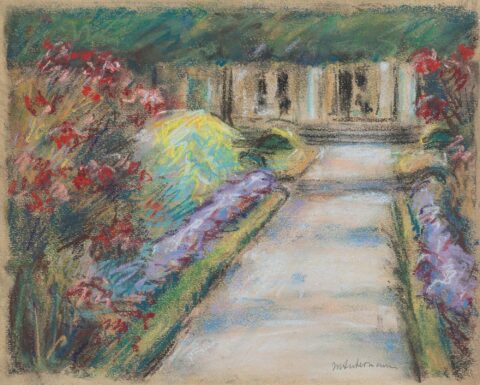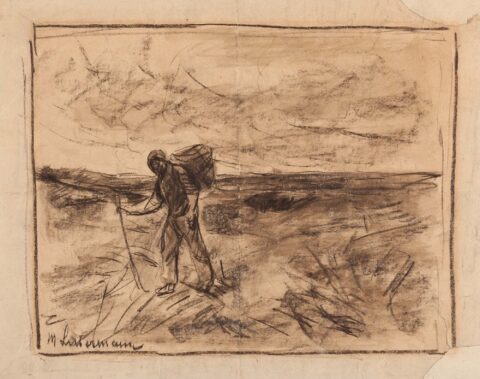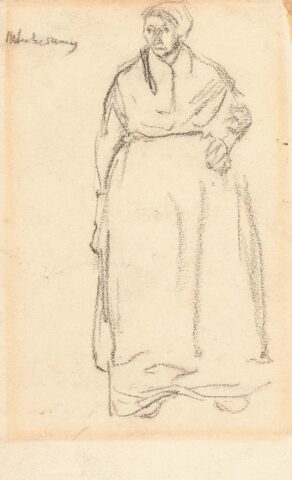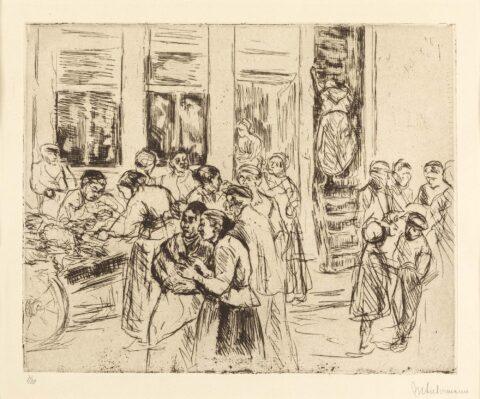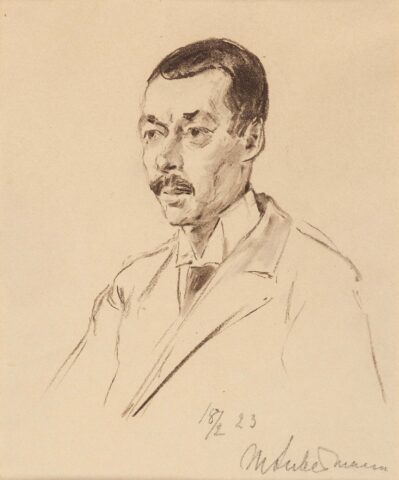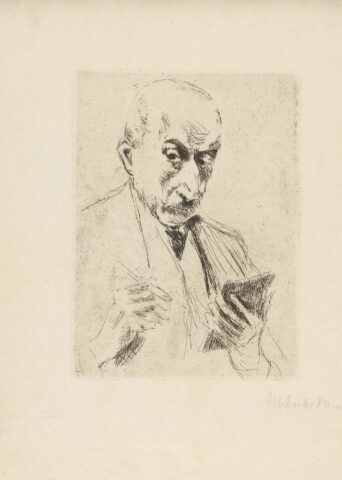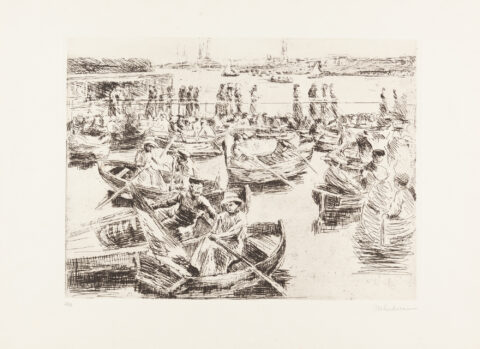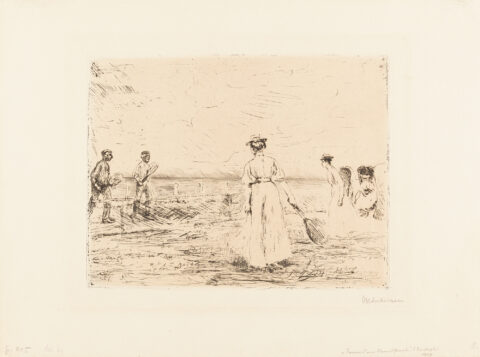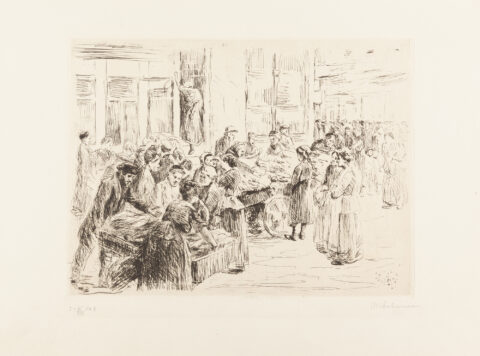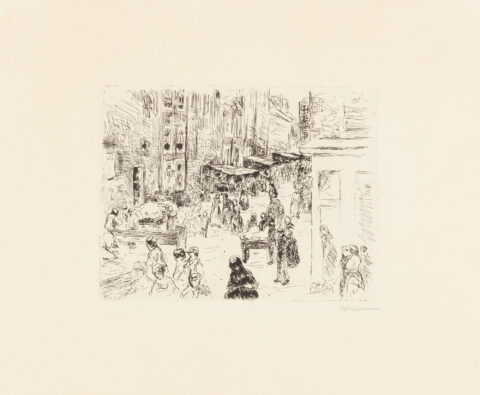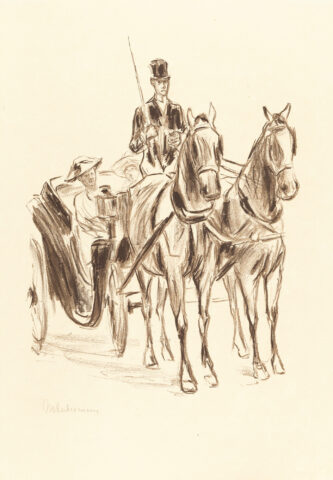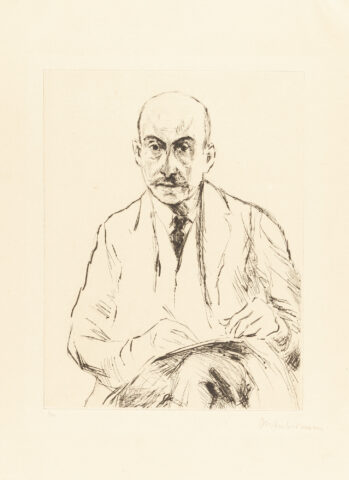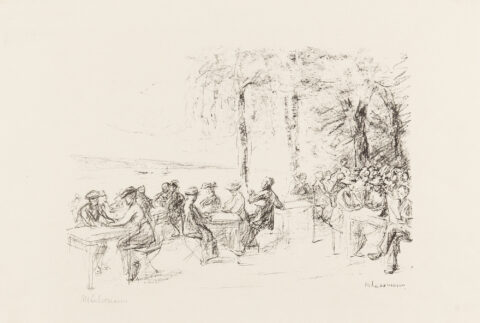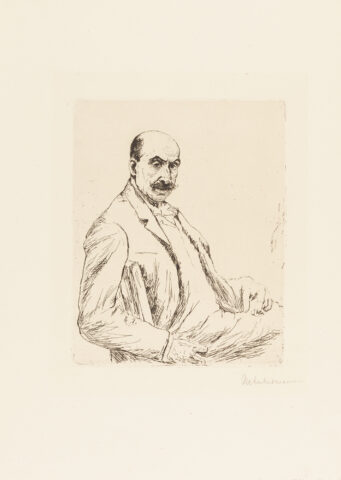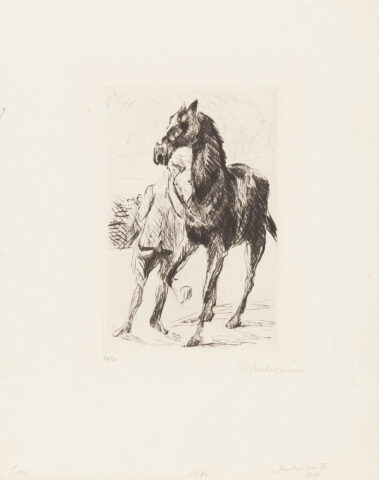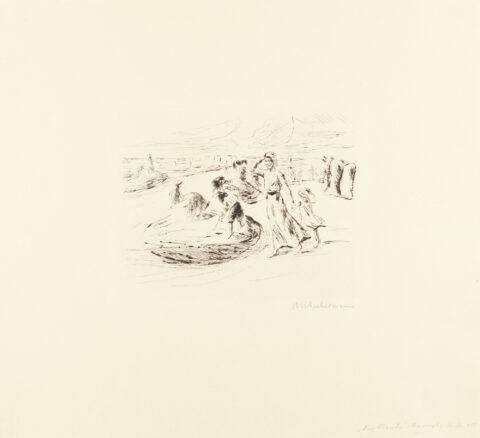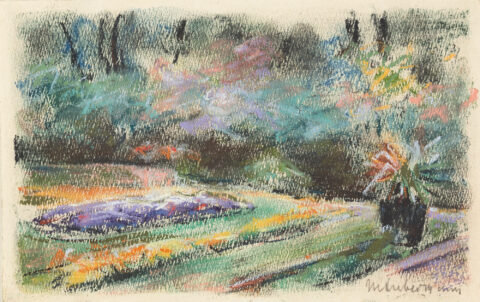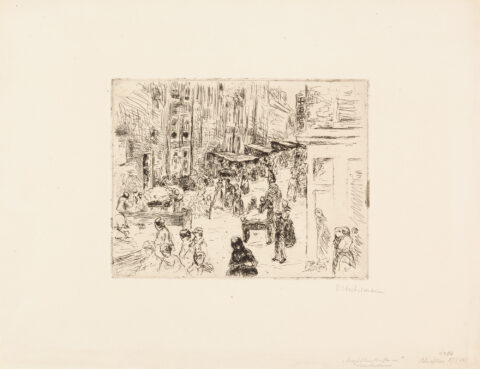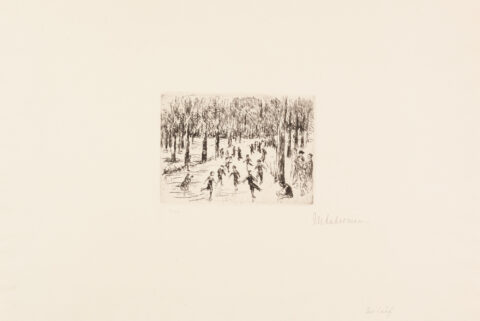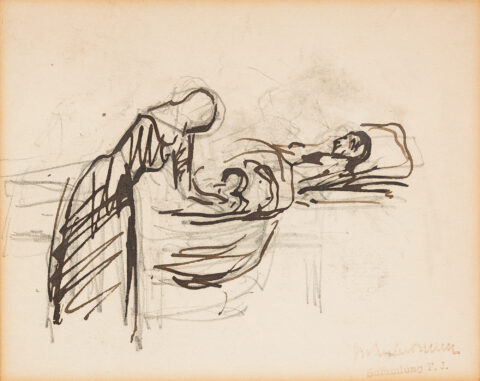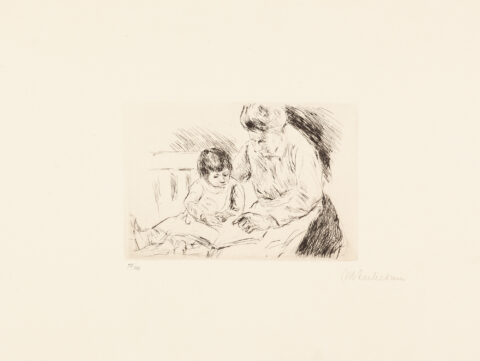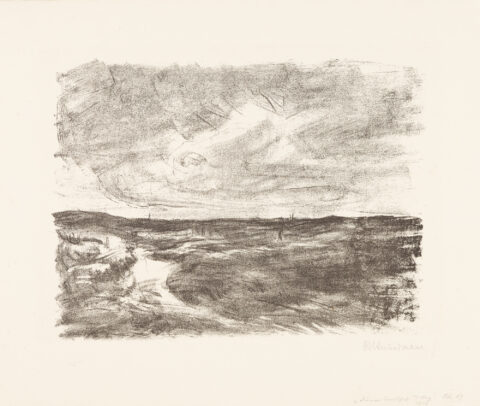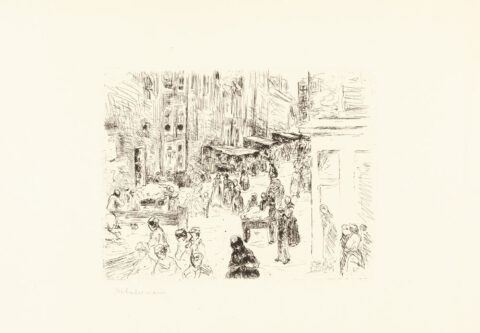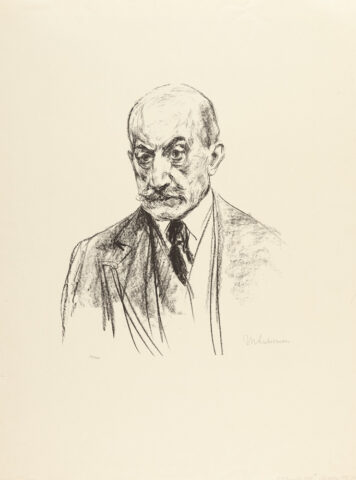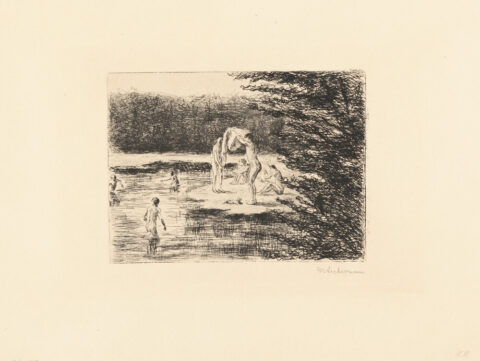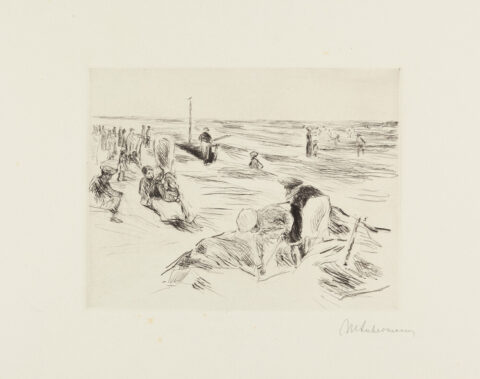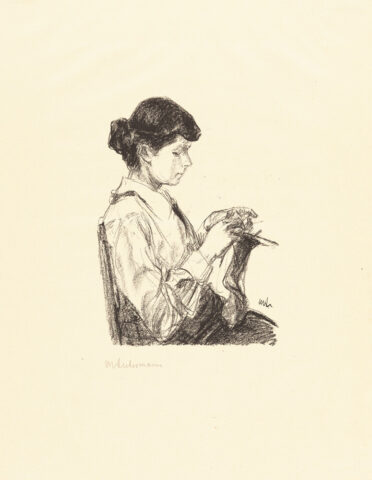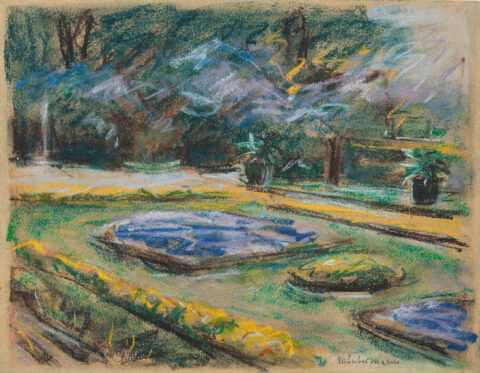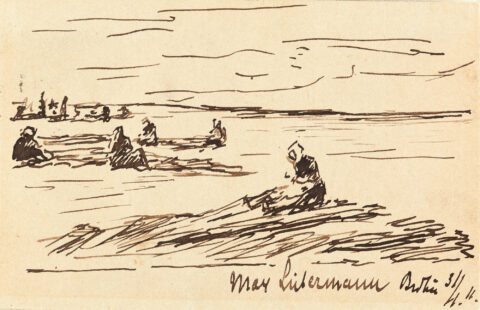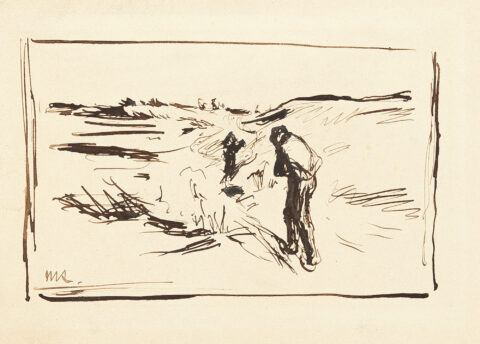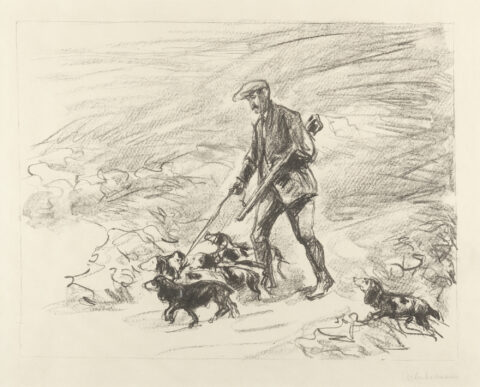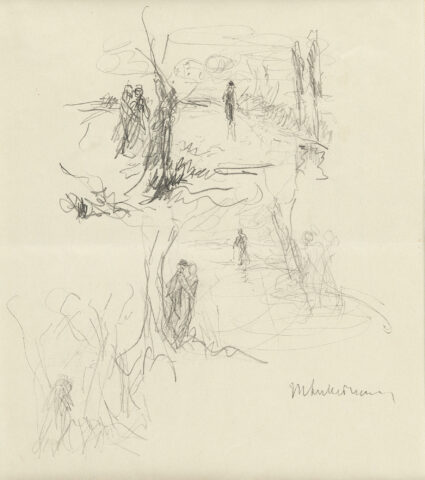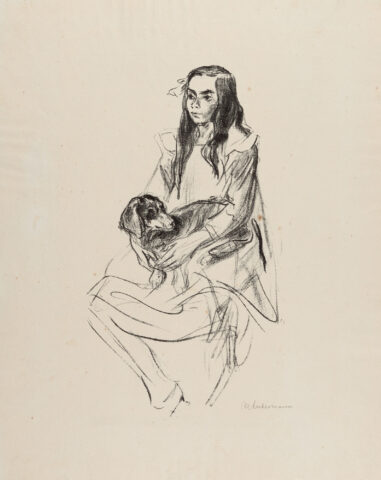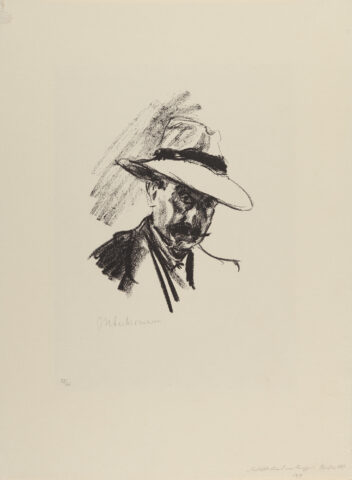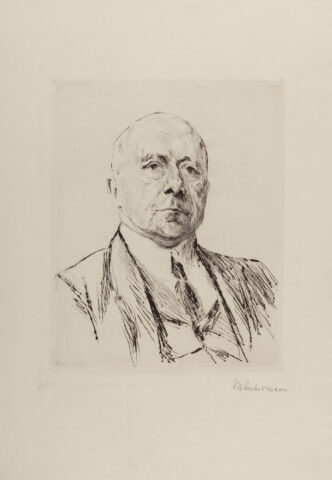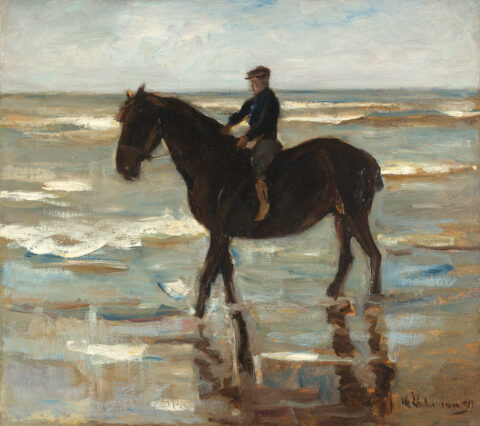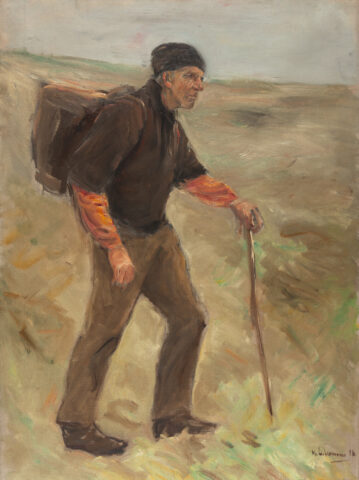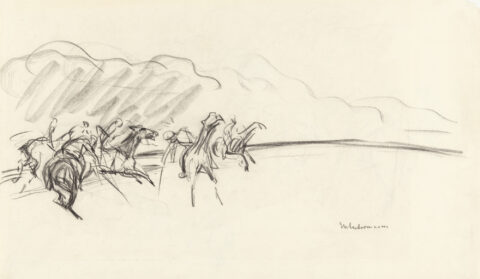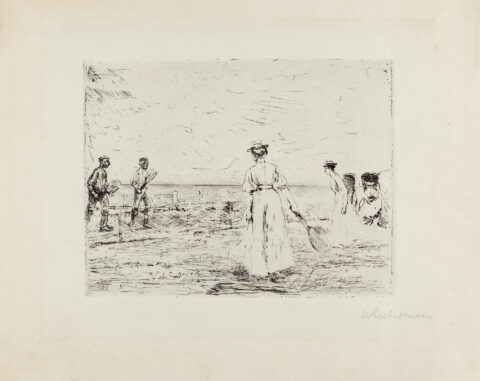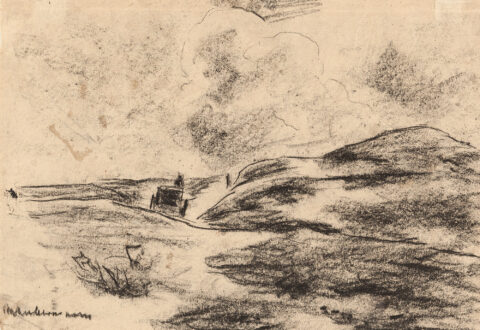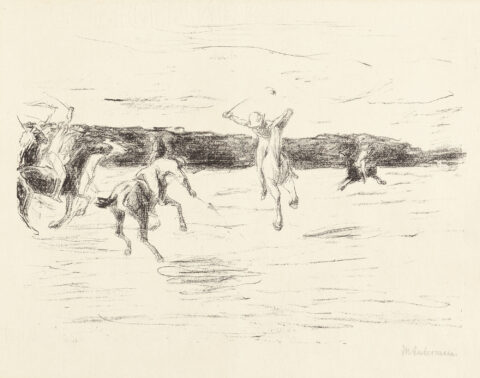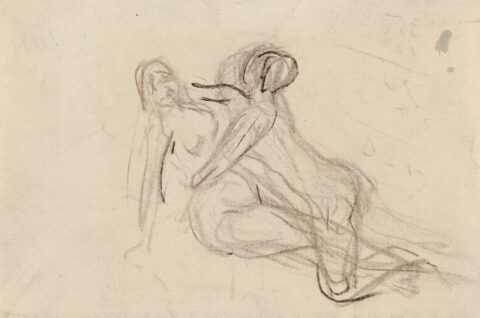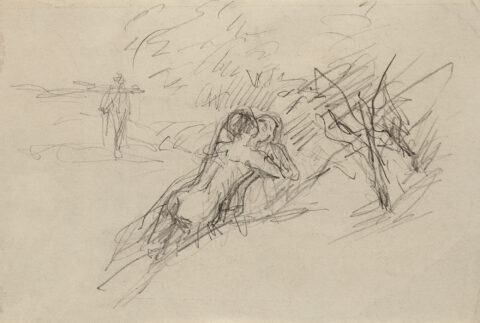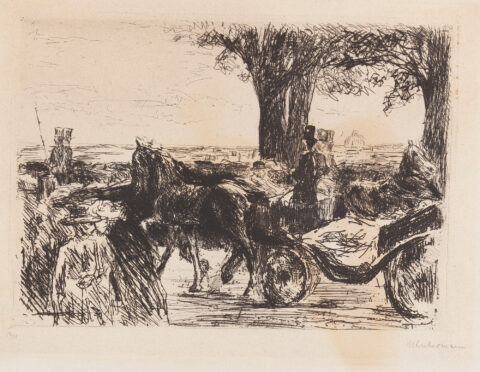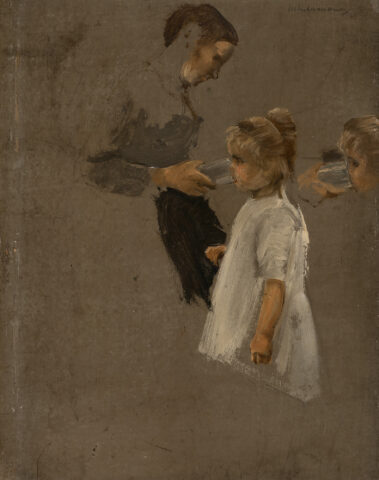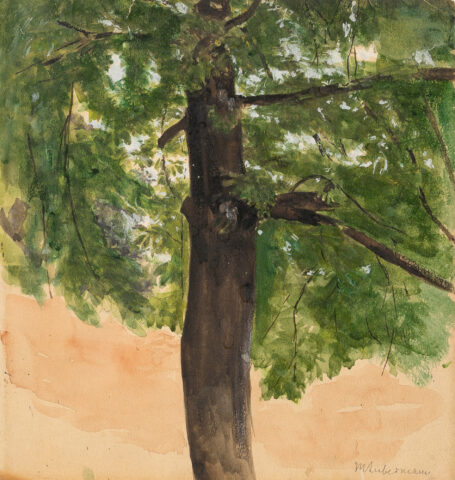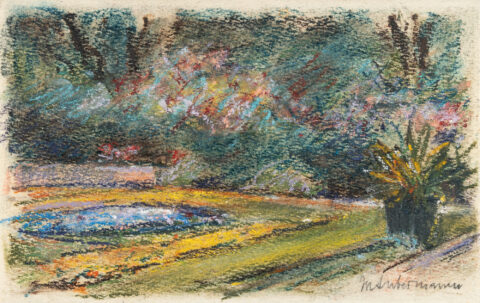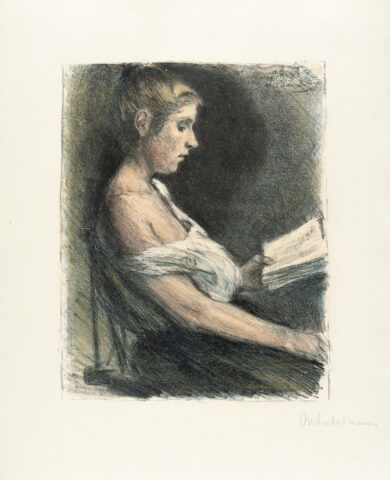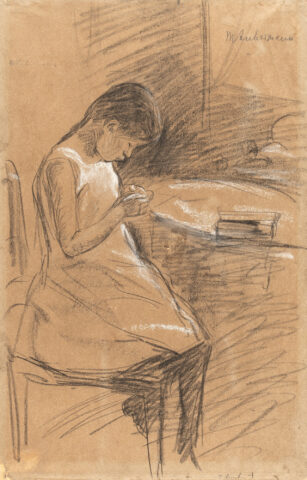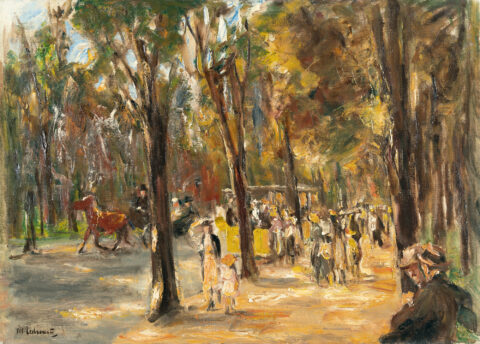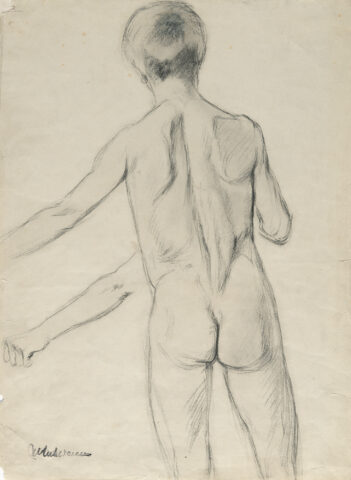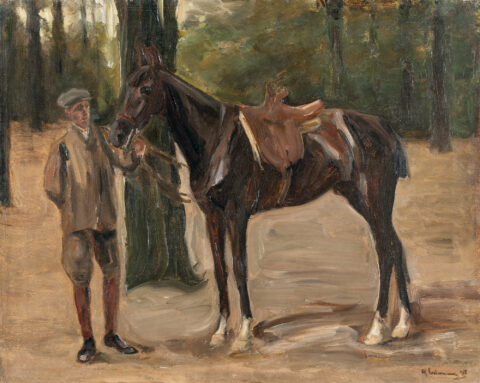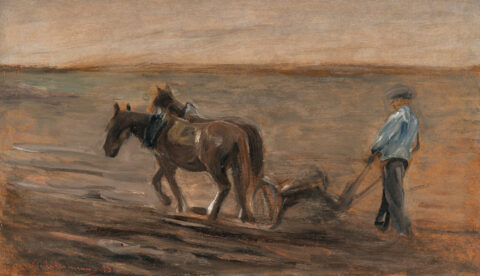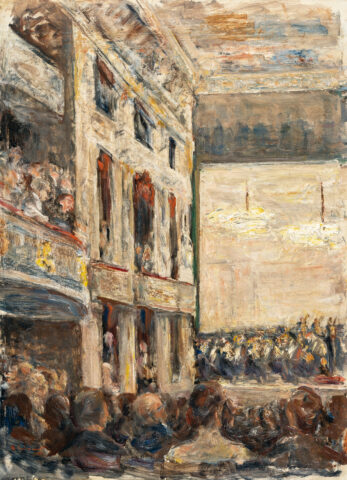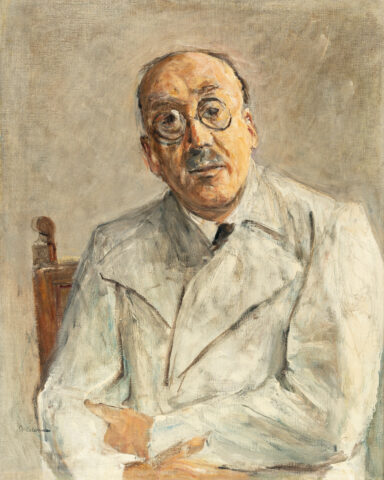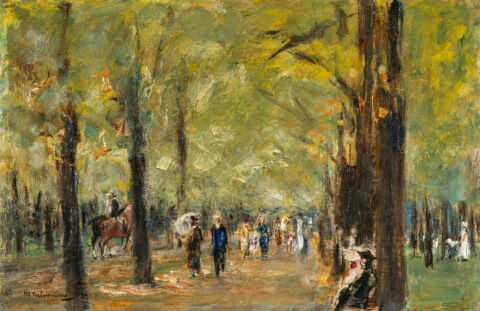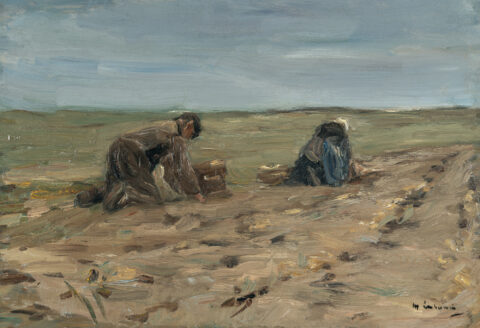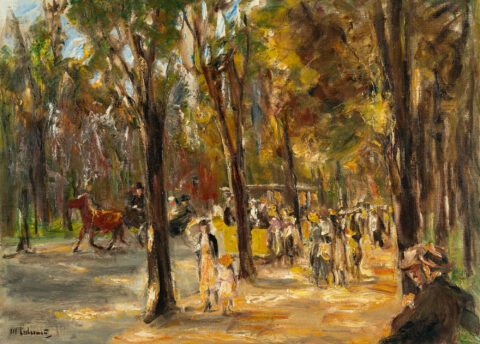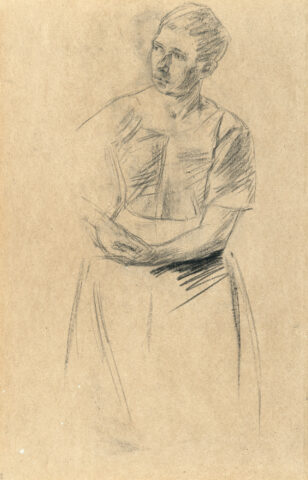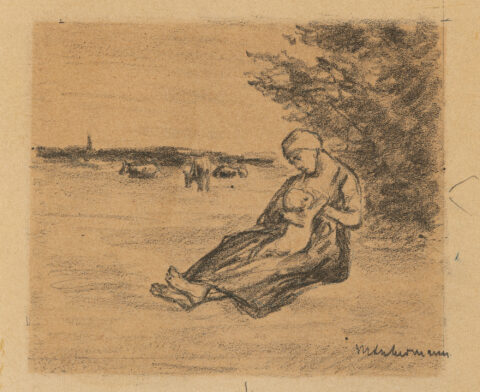Max Liebermann
Max Liebermann was born in Berlin on July 29, 1847, the second son of the Jewish textile entrepreneur Louis Liebermann and his wife Philippine. From 1863 Liebermann receives private painting lessons from E. Holbein and C. Steffeck. In 1866 Liebermann graduated from high school and began studying chemistry at the Friedrich Wihelm University in Berlin. At the same time he does painting work for his teacher Steffeck. In 1868 Liebermann is exmatriculated and, despite disputes with his father, is allowed to study at the Grand Ducal Saxon School of Art in Weimar. He became a student of F. Pauwels, a Belgian history painter, and studied there until 1872, during which time he became acquainted with paintings by Rembrandt, which made a strong impression on him. He now produced his first naturalistic works. After a brief participation in the Franco-Prussian War in 1870, Liebermann went to Düsseldorf in 1871 for study purposes, where he visited the studio of Mihály Munkácsy. In the same year he traveled to Amsterdam and Schweningen for the first time. In 1872 Liebermann completed his first major work, “Die Gänserupferinnen” (“The Goose Pluckers”), which was promptly exhibited in Hamburg and Berlin and met with fierce opposition. In 1873 Liebermann moved to Paris and set up a studio in Montmartre. Unfortunately, Liebermann’s desired contact with the French Realists and Impressionists did not take place. On the occasion of the World’s Fair Liebermann visits the history painter Hans Makart. In 1874 Liebermann spends the summer in Barbizon, where he studies the open-air painting of the Barbizon School. In 1875 he spends the first of many following summers in Holland. There he studied Frans Hals and other works by Rembrandt. Under these influences he created his first works in cheerful colors. In 1878 Liebermann left France without having achieved major success at the Salon de Paris. In Venice he met Franz von Lenbach and others and followed them to Munich in December. Liebermann’s 1879 work “The Twelve-Year-Old Jesus in the Temple” leads to great criticism and hostility. On a trip to Amsterdam in 1880, the painter discovers an old man’s house, which he describes as a key experience. In the 1881 work “Old Man’s House in Amsterdam” Liebermann uses “sunspots” for the first time as a painterly and animating device, thereby creating movement in the work. This new stylistic device brought Liebermann recognition at the Salon de Paris and in 1882 at the Munich Kunstverein. Liebermann meets Jozef Israels in The Hague, the beginning of a long friendship. In 1884 Liebermann goes back to Berlin and marries Martha Marckwald in September. In 1885 his only daughter Käthe is born. In the same year he meets Alfred Lichtwark, later director of the Hamburg Kunsthalle, who becomes an important patron. In 1889, the Berlin National Gallery becomes the first museum to purchase a work by the artist. In 1892 Liebermann moves into the Palais am Pariser Platz, which becomes his property after his father’s death. In 1894 Liebermann receives the Great Gold Medal at the International Art Exhibition in Munich for his painting “Old Woman with Goats” and takes part in the Paris World’s Fair. His large inheritance now allows him an independent lifestyle and the means for his own Impressionist art collection. From 1895, the artist turned to portraiture and won first prize in Venice for his pastel of Gerhart Hauptmann. In 1896, further appreciative exhibitions followed and Liebermann met the new director of the Berlin National Gallery, Hugo von Tschudi, who sought Liebermann’s advice on acquisitions. After receiving a professorship at the Royal Academy of Arts in 1897, he becomes president of the newly founded Berlin Secession in 1898, which is of great importance for German Impressionism. For his 50th birthday in 1897, the Academy dedicates an entire exhibition hall to him, showing 30 paintings and other works.
Liebermann increasingly turned to bourgeois motifs such as beach scenes and leisure activities. In addition, his color palette became brighter and more colorful. In 1907 the Berlin Secession dedicated a large birthday exhibition to him. In 1909 Liebermann acquired a plot of land on the shores of Wannsee, where a villa with a garden was built according to his ideas, which he moved into in the summer of 1910 and which, after extensive reconstruction, has been open to the public again since 2006 as the Liebermann Villa, a private museum. In 1920 Liebermann became president of the Prussian Academy of Arts until he resigned the post in 1932 due to illness, but was elected honorary president instead. When the National Socialists come to power, he resigns as honorary president, among other things, after it is decided that Jewish artists will be banned from exhibiting. He now withdraws from the public eye and dies in Berlin on February 8, 1935.


